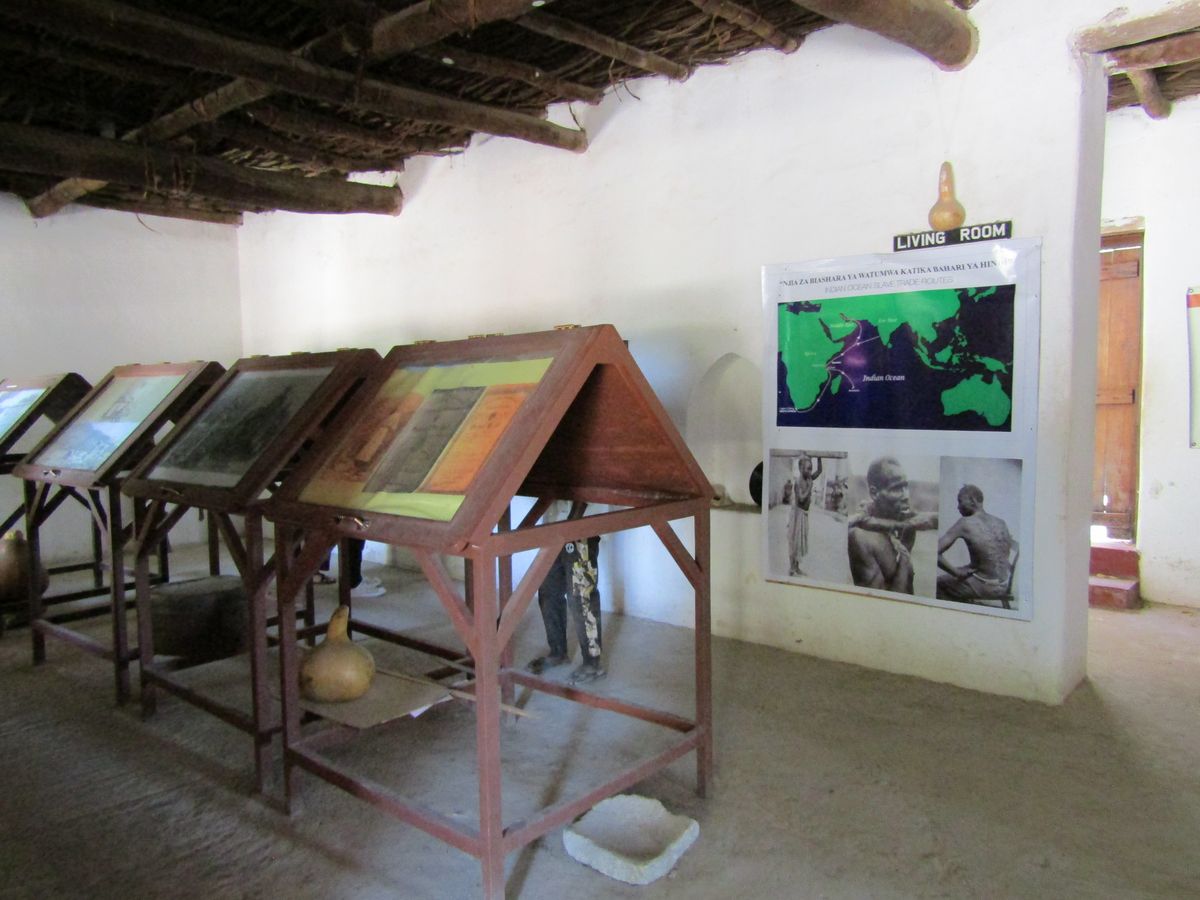Reports by Anastasia Banshchikova, Valentina Bryndina, and Oxana Ivanchenko within the framework of the scientific seminar "Culture and Society"
On October 25, 2022, two reports were heard at the scientific seminar "Culture and Society": Valentina Bryndina and Oxana Ivanchenko “Representations of mainland Tanzanians, residents of Zanzibar and native Zanzibaris about the history of the Arab-Swahili slave trade in the 19th century: preliminary results of the 7th field season” and Anastasua Banshchikova "Visualization of the history of the Arab-Swahili slave trade in modern Tanzania: museum expositions, sculptural groups, artifacts". Both reports were made within the framework of the RFBR grant 20-09-00361 "Cultural memory of the Arab slave trade of the 19th century and its impact on interethnic relations in modern Tanzania."

Report by Valentina Bryndina and Oxana Ivanchenko covered some of the results of the recent field season in Tabora, a city in central Tanzania, and in the city of Zanzibar on the island of the same name, and also touched on the results of the last field season, which took place in Kigoma / Ujiji on the coast of Lake Tanganyika and also in Zanzibar. The trends identified in the field material were demonstrated regarding the answers to several key questions of the standardized questionnaire, namely “who were the slave traders” and “where were the slaves exported”. It turned out that native Zanzibaris have a much better and more historical understanding of the history of the Arab-Swahili slave trade of the 19th century: they more often give answers that the slave traders were Arabs, and they exported slaves to the Arab countries and the Indian Ocean basin region. On the contrary, in the mainland, almost regardless of the location in which the surveys were conducted, respondents were much more likely to answer that the slave traders were mainly Europeans, and the slaves were exported to Europe (however, there were also answers corresponding to historical reality). Since there is a large stratum of first-generation Mainlanders among Zanzibarians due to the high level of labor migration, the responses of Zanzibarians as a whole occupied an intermediate position between the more historically reliable answers of native Zanzibaris and the less historically reliable answers of Mainlanders. An explanation for this phenomenon and the reasons for the distortion of historical reality in the responses of mainland Tanzanians will be offered in the publications of the project participants.
In the report of Anastasia Banshchikova demonstrated the visual and textual component of the Tanzanian museums covering the subject of the slave trade. Expositions of seven museums were considered: the Museum of the Slave Market in Zanzibar, the National Museum in Dar es Salaam, the Museum of the Catholic Mission in Bagamoyo, the Caravanserai in Bagamoyo - now the Museum of the Slave Trade, the Livingston House Museum in Mikindani, the Livingston Museum in Ujiji and Tembe of Livingston in Kvikhara near Tabora. In the visual design of the expositions, maps of slave trade routes and directions for the export of slaves were considered separately; sketches and photographs of a slave market in Zanzibar; sketches of slave caravans on the way (including two of the most famous and frequently used, taken from the publications of Livingston's memoirs), photographs of slaves in horns and with heavy blocks of wood that were supposed to prevent escape. In the text accompanying the expositions, the answers to the question of who the slave traders were also varied: in a specialized museum in Zanzibar, a balanced historical approach was noted (the role of Arabs was emphasized, the role of local leaders was emphasized, Europeans were not mentioned); in the Caravanserai and the Livingston Museum in Ujiji the text part is the same and not reliable enough (Europeans appear as the main slave trading force), in the Livingston House Museum in Mikindani the slave trade is directly and unequivocally called Arab. The report also examined posters against the stigmatization of the descendants of slaves hanging in some museums, wooden and metal artifacts present in a number of expositions (shackles, chains, spears, etc.), as well as sculptural groups, frescoes and paintings highlighting the theme of the slave trade.







